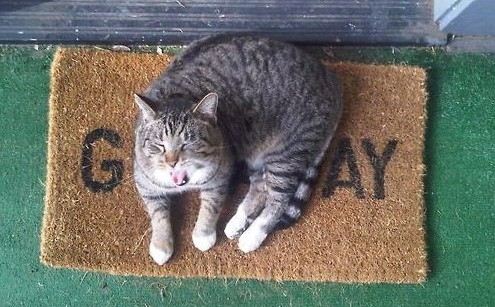How to Teach a Cat to Learn its Name
You brought a new kitty home. You named the lovable furball. But for some reason – your furry friend just won’t respond to their name. You can’t figure out why. You’ve tried some training, but nothing is working.
Curious how to teach a cat its name? You’ve come to the right place. While cats are tough animals to train, it can be done. There’s no doubt about that. You just need a plan in place.
Contents
Understanding Your Furry Friend
First and foremost, you need to understand your cat. Cats are not like dogs. They don’t have an urge or desire to bond with their owners. Most cats are perfectly fine doing their own thing. They can be frivolous and capricious. That’s just how most felines operate.
Once you know your cat isn’t motivated to please or see you, you’ll start to understand their goals and motivation. Your cat isn’t going to respond to his or her name for fun.
Enter positive reinforcement. You can’t punish or scold a cat for not responding to their name. You’ll have to give them positive encouragement. You need to give a cat reason or motivation to come when you call his name.
Positive reinforcement simply means food. You’re training your cat to respond to their name by giving them treats when they do. That’s the gist of it. However, you need to follow our step-by-step guide below to ensure the training sticks.

How to Teach a Cat Its Name: Step-By-Step
Ok, no more fluff. It’s time to get your cat responding to their name ASAP. Here’s exactly how you can do just that:
Pick a Simple Name
Always pick a name for cats that is one or two syllables. If you pick a long, intricate name for your furry friend, you’ll end up disappointed when he or she never learns to respond
Instead of naming your cat Fluffy McScissor Pants, you could just shorten things to Fluffy. Instead of Sargent Pepper, your feline’s name can be shortened to Sarge. Short names make it easier for your cat to remember and respond.
If you insist on having a super long name for your furry friend, you may decide to train the furball to respond to Kitty. Here Kitty, Kitty tends to work well.
Lastly, never change your cat’s name on them. This will only end in confusion. Once your cat becomes adjusted to its name, never change it. The same can be said for nicknames. Consistency is vital for our furry friends.
Start Young
The younger you start training your cat to respond to their name – the better a chance he or she will learn to come when you call. If you can start training your furry friend before the 12-week mark, you’re sure to have better success.
While an older cat can learn new tricks, it’s a little more difficult.
Find Rewarding Rewards
You need to train your cat to respond with a reward they love. You need to motivate your cat. Attention and verbal praise just don’t cut it with felines. Your cat needs tangible rewards right away during training.
Food is often the best way to reward a cat. Some cheese or tuna is a great treat. You can also offer commercial cat treats and some wet food when they respond to their name.
Find what works best for your cat, as every cat is different. Eventually, you can wane your cat off food treats and maybe play a game with a laser pointer or offer your furry friend a scratch as a reward for responding.

Always Positive
Never scold your cat with its name. This will ensure a negative reinforcement with the name and training will become that much more difficult. Instead, simply use a “No!” when your cat acts up.
Start Actively Name Training
To start the training process, you’ll begin by feeding your cat a little bit less than normal. A full kitty won’t have much need for a food treat. You want your cat a little hungry during the training process.
Once your cat is hungry and ready, walk up to them with a treat or two. Say your cats name 2-3 times and then offer a treat. Do this process a few times. Only saying your cat’s name.
Next, walk a few feet away and hold a treat in the air. Say “come” plus your cat’s name 2-3 times. The cat will typically approach you because they can smell the food. As your cat is eating, continually say their name. You want to link the food to the furballs name.
You’ll want to do this 10-20 times a day for at least 2-3 weeks. This will ensure your cat starts responding to his or her name consistently. Make sure to get small cat treats. You don’t want your furball getting chunky during the training process.
Take a Step Back
After the first couple weeks, you’ll want to increase the distance in which your cat responds to his or her name. Try calling your cat from different rooms or while you’re sitting on the couch.
Involve Others
If your furball is a family cat, make sure you explain the rules to all who are involved with the cat. Make sure everyone is using the same, short name. Banish all nicknames and keep things consistent for your feline.

What to Do if a Cat Won’t Listen?
Some cats just won’t respond to their name. This doesn’t necessarily mean you have a stubborn or stupid kitty on your hands. Many felines, especially cats with white fur, are prone to being deaf.
If your cat doesn’t seem to be picking much up after 3-4 weeks of training, you may need to go to the vet and get her ears checked. Most cats can be trained to learn their name, but a deaf cat cannot.
The keys to training a cat to learn its name are age and consistency. Start at a young age. Train your cat while it’s a kitten. Make sure you stay consistent with things, so you avoid furball confusion. If you can do those two things, your furry friend will come running when you call in no time.


